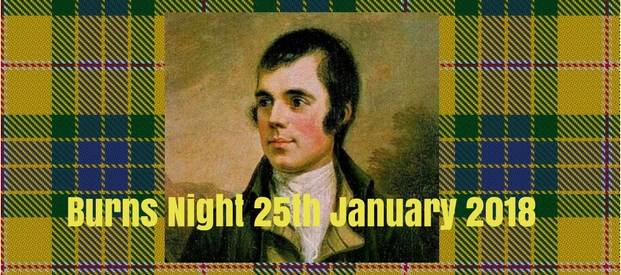Burns Night
On 25 January each year, Scotland remembers its favourite poet, celebrating the life of Robert Burns with a haggis, some poems, a handful of speeches and perhaps a dram of whiskey.
The Poet’s Life
Robert Burns was a prolific writer of poetry and songs about nature, love, life and death, mostly written in the Scottish dialect. His words are as meaningful now as they were when he wrote them in the 1700s.
He had a hard life, living in near-poverty for most of his days. He grew up on a farm, the son of tenant farmers, but his father made sure his sons had a good education and young Robert became an avid reader. By the age of fifteen, charismatic Robert had already written his first love poem to a farmer’s daughter from Dalrymple, and throughout his life he celebrated his love affairs and great appreciation for women in poems and songs.
During his lifetime he published volumes of his poems and won some fame in Edinburgh, but the hardships of his life took their toll and he died, in debt, at the age of just 37. It was only later that his genius became widely recognised.
Five years after his death, his friends threw a party. Robert Burns had always revelled in a good night out, and so this seemed an ideal way to celebrate his memory. It’s a tradition which has continued ever since, and now Burns Night Suppers follow a similar format all over the world, with Burns’ own words playing an important part.
Burns Night festivities
Once the guests are seated at the dinner table, the evening begins with the words of Robert Burns from his ‘Selkirk Grace’.
‘Some hae meat and canna eat,
And some wad eat that want it,
But we hae meat and we can eat,
And sae the Lord be thankit.’
First on the menu might be cock-a-leekie soup, after which, once the plates have been cleared away, the bagpipes sound and the piper marches through the room in full highland dress, closely followed by the chef, carrying the haggis high on a platter for all the guests to admire.
The haggis is placed on a table for the ‘Address to the Haggis’, a dramatic reading of Burns’ humorous poem in praise of the ‘great chieftain o’ the puddin’ race’, in which Burns rejoices in good, honest Scottish fare and scorns those who prefer the fancy French food. After a toast to the haggis, the meal is served: always haggis, neeps and tatties, followed by a pudding or a cheeseboard with bannocks.
After dinner, the speeches: beginning with a reflection on the life of Robert Burns and a toast to ‘The Immortal Memory’. Next, in honour of Burns’ love for the ladies, one of the guests gives the ‘Address to the Lassies’, praising the role of women in the world today. The women reciprocate – or get their revenge – in the ‘Reply from the Lassies’. Songs, poetry or Scottish country dancing might follow.
As the evening began with Burns’ own words, so it ends, as everyone joins in a big circle to sing ‘Auld Lang Syne’, probably Burns’ most famous song. It is a celebration of friendship, known and sung at farewells the whole world over: at the end of the Last Night of the Proms, and each night of Edinburgh’s Military Tattoo; at the 2014 Olympic Games closing ceremony, and at military occasions, funerals, and, of course, on New Year’s Eve.
In many cases, the ceremony is cut short, and just the address to the haggis remains, to keep proceedings a little lighter. Events often include Scottish dancing or ‘reeling’, and guests of every nation celebrate with friends epitomising Scottish values, love and friendship.
We offer a full range of Scottish calendars depicting the wonderful scenery on offer.
See the full Scottish range here:
https://www.rosecalendars.co.uk/scottish-calendars










